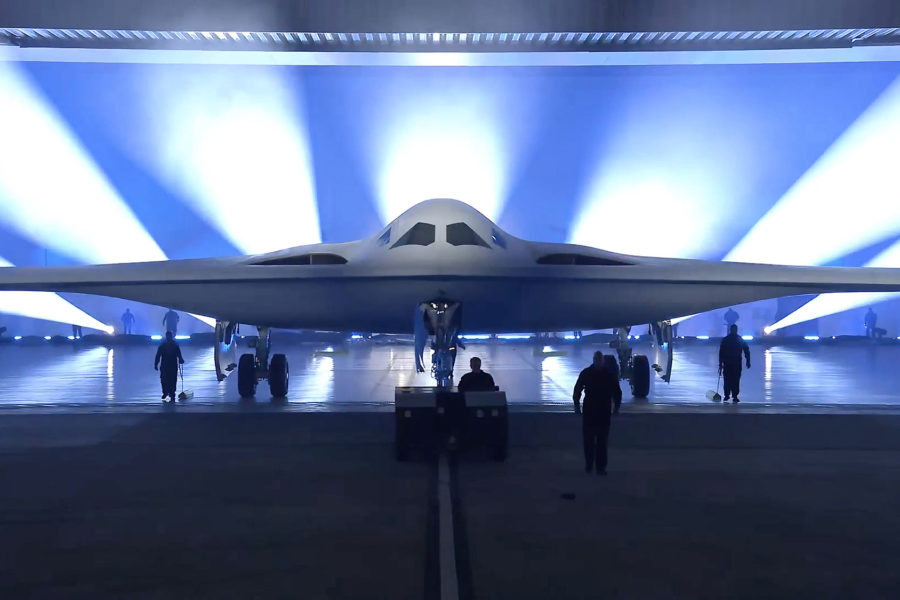The Air Force isn’t looking to buy more than 100 B-21s because it may come up with something better by the time all those aircraft are built, Air Force Chief of Staff Gen. David W. Allvin told the Senate Armed Services Committee on April 16.
While the B-21 “is the future of our bomber force,” Allvin told the SASC that fresher, more effective technology may appear before the planned B-21 production run is complete, making the Air Force hesitant to commit to any more just yet.
One hundred B-21s “is the program of record,” Allvin said under questioning from Sen. Mike Rounds (R-S.D.). Northrop Grumman is the B-21 prime contractor.
“I think we’re not going to reach that number until probably the mid-2030s and beyond,” he said. “I think there are other technological advancements that we would see to be able to augment that and have a better mix … before we commit to that as being the platform” that will serve as the backbone of the future bomber force “beyond that.”
The original, 2015 requirement for the B-21 was 80-100 airframes, and it was upgraded to “at least 100” in more recent years. Heads of Global Strike Command and various think tanks have voiced a requirement for as many as 225-250 B-21s, but the Air Force has stuck to 100, as part of a fleet that also includes 75 B-52s and 45 B-1Bs until the early 2030s. The Air Force’s stated goal has been to neck down to just the B-21 and the B-52 as its bomber force.
Allvin did not elaborate on what other technologies the Air Force is considering to “augment” the B-21 force.
His comment that the full B-21 production run of 100 will not be achieved until the mid-to-late 2030s underscores that the bomber won’t be built at a very aggressive rate, suggesting an annual production of less than 10 airframes per year. Pentagon acquisition and sustainment chief William LaPlante recently said that the B-21’s production rate was deliberately set at a low level to protect it from budget cuts.
Air Force Secretary Frank Kendall, also testifying before the SASC, said the largely secret B-21 is “moving forward.”
“We’re pretty happy with the progress,” Kendall said. “I’m always very careful about saying positive things about programs and development … they all have risk.
But Kendall did express cautious optimism.
The “B-21 has been performing close to the original schedule and costs and delivering capability,” he said. “It’s in testing. We just had the milestone C approval to enter low-rate production.”
That approval was given by LaPlante in December after the B-21 made its first flight in November of 2023. The Air Force has subsequently acknowledged only one further test flight, although more are likely to have been flown. Northrop officials have said that once the airplane flew the first time, a high-frequency flight test schedule would ensue.
In announcing the low-rate production schedule, LaPlante said through a spokesperson that “one of the key attributes of this program has been designing for production from the start—and at scale—to provide a credible deterrent … if you don’t produce and field to warfighters at scale, the capability doesn’t really matter.”
The Pentagon did not specify any of the terms of Northrop’s B-21 production contract, citing classification. To date, the Air Force has still not even disclosed whether the bomber has two or four engines.
Two years ago, Kendall voiced the idea of developing an uncrewed adjunct to the B-21 in the conventional deep strike/nuclear mission, but later shelved that idea as being “not cost-effective.” However, the B-21 has been characterized from its inception as being part of a “family of long-range strike systems” acknowledged to include some kind of flying armed or electronic warfare escorts communications relay aircraft, or both.
